Do you hate paying for monthly gym membership fees only to arrive at the facility and the machine you want is taken? To avoid the nuisances of working out in a public space, your basement is a great solution to create the ultimate home gym.
Contrary to popular belief, this renovation project doesn’t take up as much space as you’d think, as long as you plan and design ahead to maximize the layout of the room. Harmony Basements has provided Toronto homeowners with valuable tips and ideas on how to best turn their bottom floor into the ultimate basement gym.
Assessing Space for Different Basement Gym Ideas
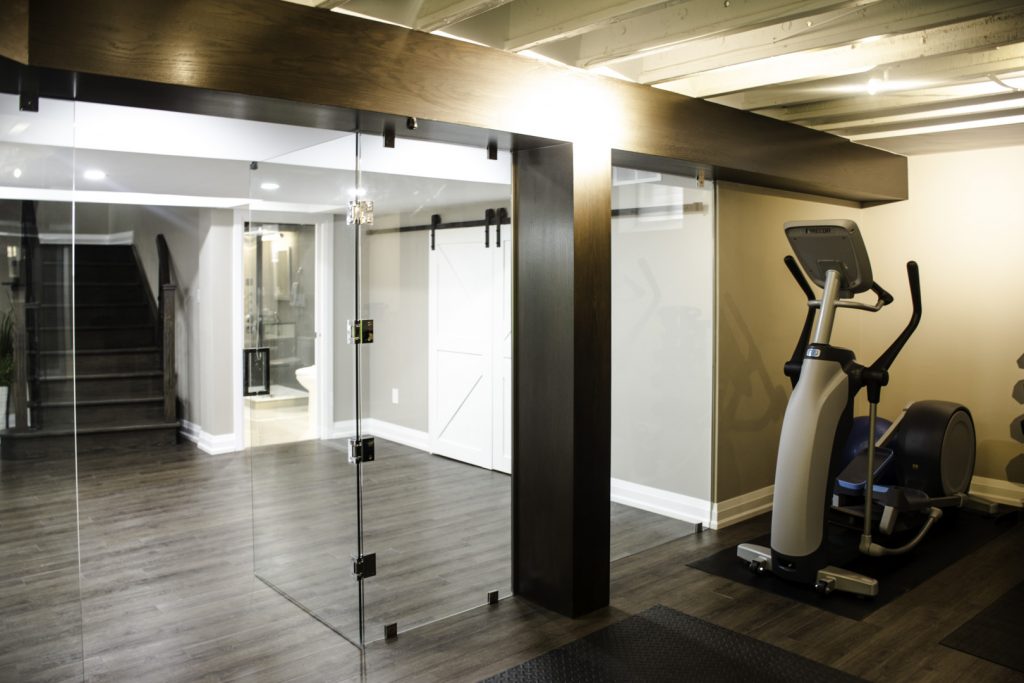
As you plan for your basement gym, you must factor in the current layout of your existing space. You may want to ask yourself questions about the physical dimensions such as:
- Is your basement space large enough for a home gym?
- Will machines and weight racks fit in easily?
- Is there enough space behind or in front of you to drop weights?
- Is the ceiling high enough for lifting weights over your head?
Also look out for whether you have access to electrical outlets. Many cardio machines require electricity, so a sufficient number of electrical outlets is necessary to avoid safety hazards with extension cords laying all along the floor. Lastly, when accessing the space for different basement workout room ideas, review your budget. What type of machines do you want, what type of equipment, and how many of each, are questions to ponder when considering if your basement gym project is feasible and obtainable both financially and logistically with your current space.
Take Time to Plan and Design your Basement Home Gym
A successful transition of your basement into a home gym is done by making sure it’s a place you’ll enjoy exercising. If the space is cluttered or feels uninviting, you’ll be less likely and less motivated to use it. Take the time to plan and design your basement home gym by measuring the room carefully to see what you can fit and start reorganizing as needed. Some helpful tips for this include:
- Donating unwanted items to your local charity, especially if this unused clutter is getting in the way of a home gym basement conversion.
- Toss any junk on the curb or in the garbage such as any furniture, appliances, electronics, or other bulky items in your basement that are broken or cannot be donated.
- Relocate items you want, for example, try finding space in the attic, garage, or other parts of the house for these objects you don’t want gone, but need to be removed from your basement.
You can also divide the room as you see fit so your gym equipment has its designated area, and the sectioned-off portion can still be used as living or storage space.
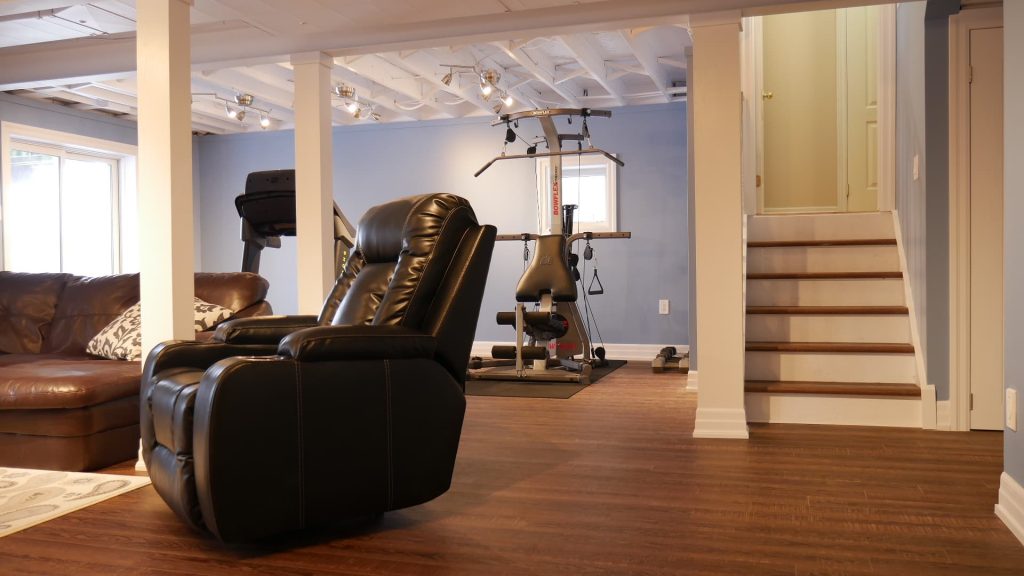
Unfinished Basement Gym Flooring and Surface Options
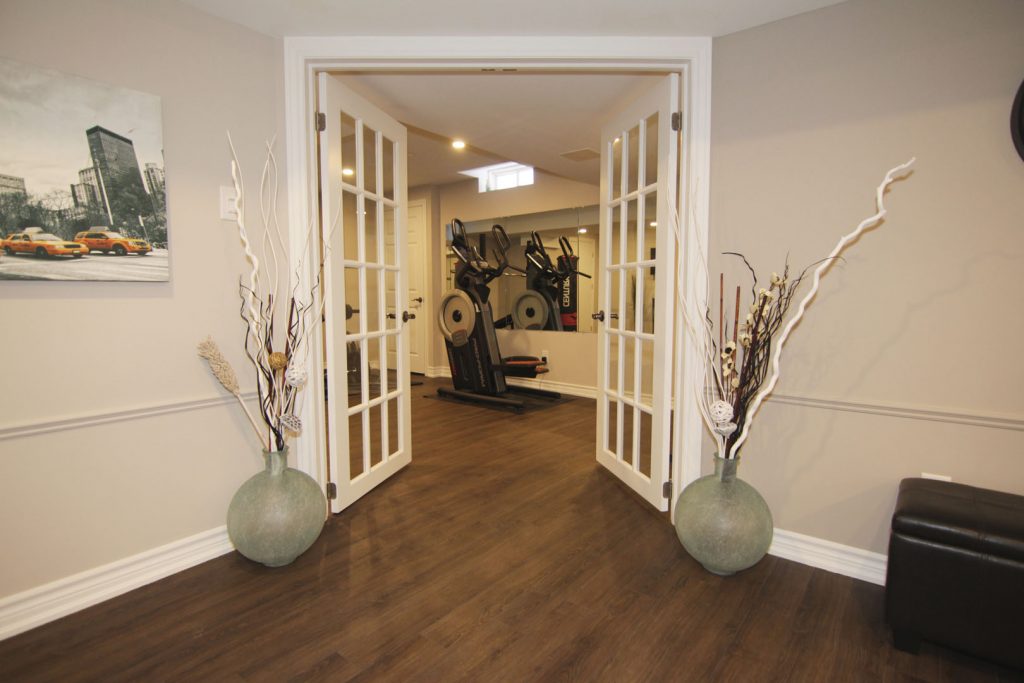
Depending on whether your basement is finished or not, creating a basement gym will differ in how you approach the flooring and surface options. If your basement is unfinished, you will have a clean slate to work with, however before getting started, keep in mind the following:
- If you haven’t done already, waterproof your basement to protect expensive exercise equipment from potential water damage, and any potential pests or mold that may be lurking.
- Be sure to clean your basement before setting up a gym and repair any cracks in your concrete walls or flooring. Also, ensure the cracks aren’t signs of a larger problem.
Proper flooring is just as important as equipment to ensure you are exercising comfortably and safely. A few of the most common types of basement gym flooring materials are:
- Rubber mats – a versatile material that can support heavy equipment and offers great shock absorption.
- Foam tiles – a gym flooring option that also offers good shock resistance and a comfort factor well-suited for lower-impact exercises like Pilates and yoga.
- Vinyl panels – this floor option is a practical choice that is a material that can withstand the rigors of home exercise while still looking presentable.
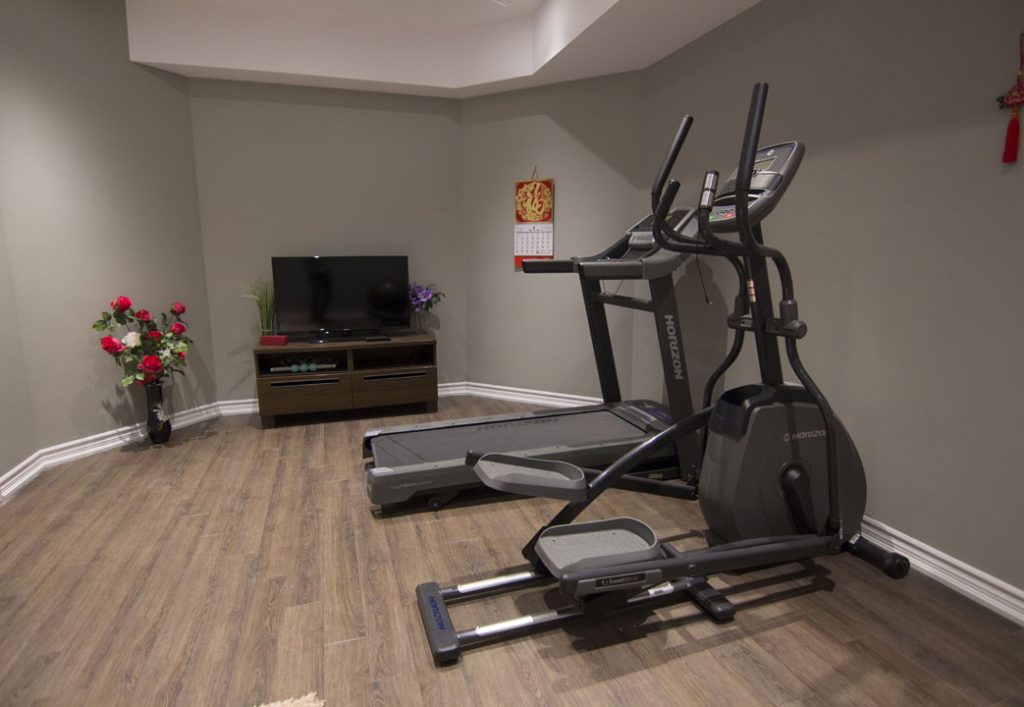
Ensuring Adequate Lighting, Ventilation, and Safety Measures for your Basement Gym
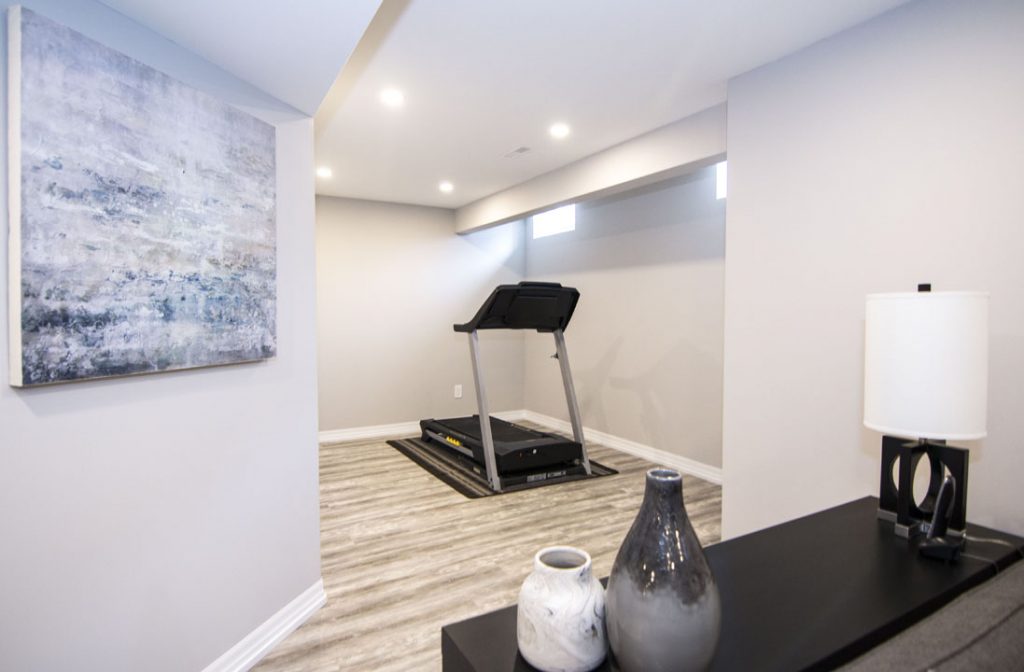
In addition to decluttering your space to make it an enjoyable place where you’d want to spend time working out, ensure adequate lighting, ventilation, and safety measures to make your basement gym visually appealing and motivating. These are several design aspects and home gym decorating ideas to consider:
- Proper ventilation – if your basement has windows, then you can ventilate the air, however, if you do not, think about installing a ceiling fan or an exhaust fan if the space permits.
- Overhead lighting – you may also want to include a dimming option if you plan on doing some yoga or meditating.
- Visual component – decorate the walls by adding photos, inspirational art, or a mural to your basement gym’s walls.
- Mirrors – choose a wall to add and hang mirrors to check form while exercising.
- Hydration station – if the space allows, set up a hydration station so water will be easily accessible.
- Space – make sure there is always enough room ahead, in front, and behind you to drop weights safely.
Setting Up the Gym Space
The most fun part of setting up a home gym in your basement is figuring out what you plan on filling the room with. There is a myriad of options of different equipment, for different workouts, that target different muscle groups, and offer different health benefits, so really think about your personal goals that you are striving towards by setting up this gym space.
Even with all the variety in equipment, these are a few of the most popular home gym setup ideas that are included in the average basement gym: bench press, weight rack, treadmill, elliptical or stair climber, stationary bike, punching bag, rower.
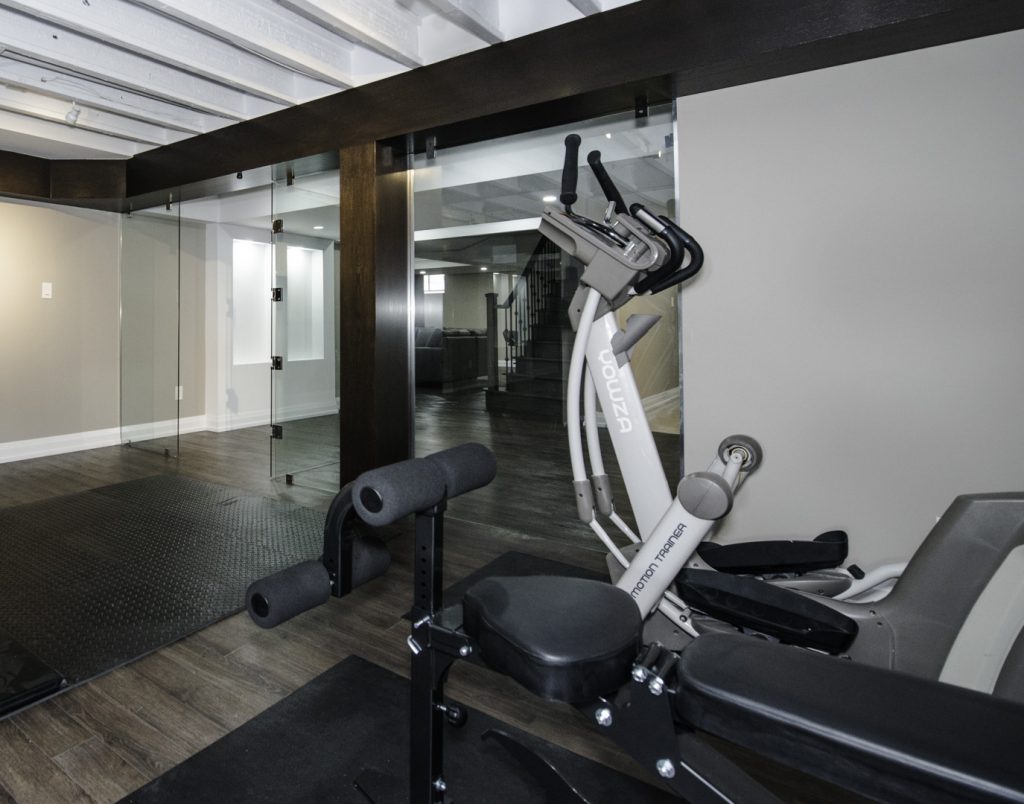
Ensuring Proper Care and Upkeep for your Basement Gym
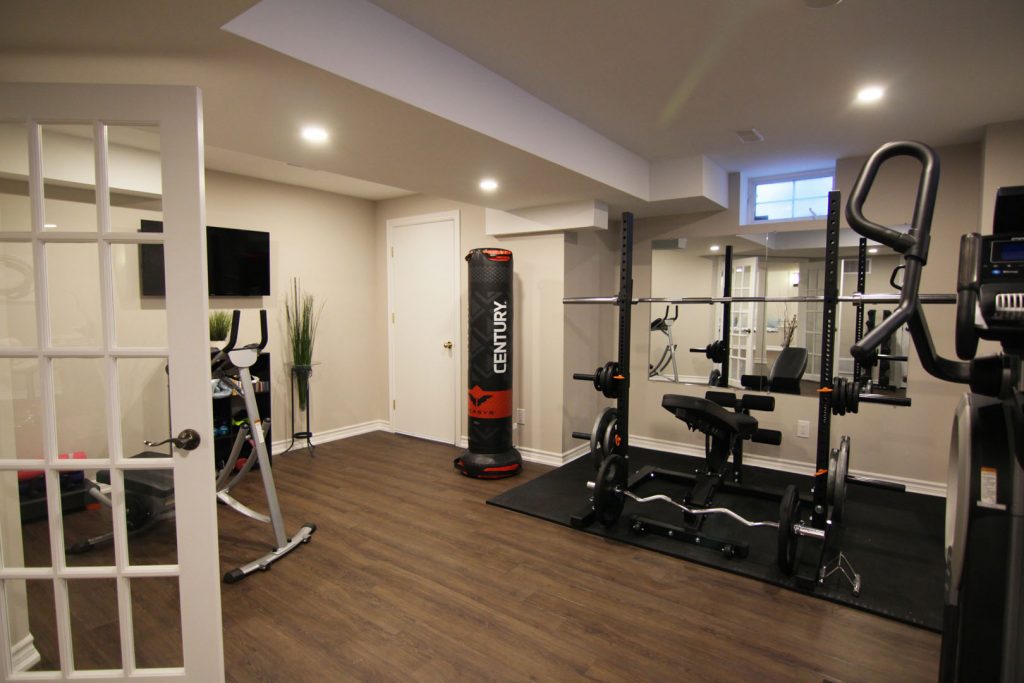
Once your basement gym is all set up, it’s vital to provide consistent upkeep and ensure proper care to maintain the condition of the equipment and organization of the space. These are a few ideas to create storage solutions in your basement gym at home:
- A weight rack placed against the wall is essential for keeping free weights or dumbbells organized and out of the way when not in use.
- Installing wall storage such as simple hooks and shelves can be used to keep yoga mats, resistance bands, and other fitness accessories organized between workouts.
- If you do not have access to a nearby closet, plastic bins are a great way to hold kettlebells, weights, yoga blocks, and other exercise accessories.
- A hygiene corner will do you good to keep the gym sanitized. Install a designated shelf or set up a table to keep antibacterial spray, sweat towels, hand sanitizer, and microfiber cloths to keep your gym sparkling clean.
Conclusion
After accessing the space, taking the time to plan and design, considering unfinished basement gym ideas for flooring and surface options, ensuring adequate lighting, ventilation, and safety measures, setting up the gym space, and ensuring proper care and upkeep, there is one thing left to do. Contact the renovation pros at Harmony Basements so we can offer our expertise to help you create the ultimate basement gym.
The post Tips For the Ultimate Basement Gym appeared first on Harmony Basements.
https://harmonybasements.ca/tips-for-the-ultimate-basement-gym/
Did you miss our previous article...
https://manstuffnews.com/basement-ideas/ultimate-guide-to-basement-office-ideas
 Backyard GrillingWeekend WarriorsAdvice from DadBeard GroomingTV Shows for Guys4x4 Off-Road CarsMens FashionSports NewsAncient Archeology World NewsPrivacy PolicyTerms And Conditions
Backyard GrillingWeekend WarriorsAdvice from DadBeard GroomingTV Shows for Guys4x4 Off-Road CarsMens FashionSports NewsAncient Archeology World NewsPrivacy PolicyTerms And Conditions
